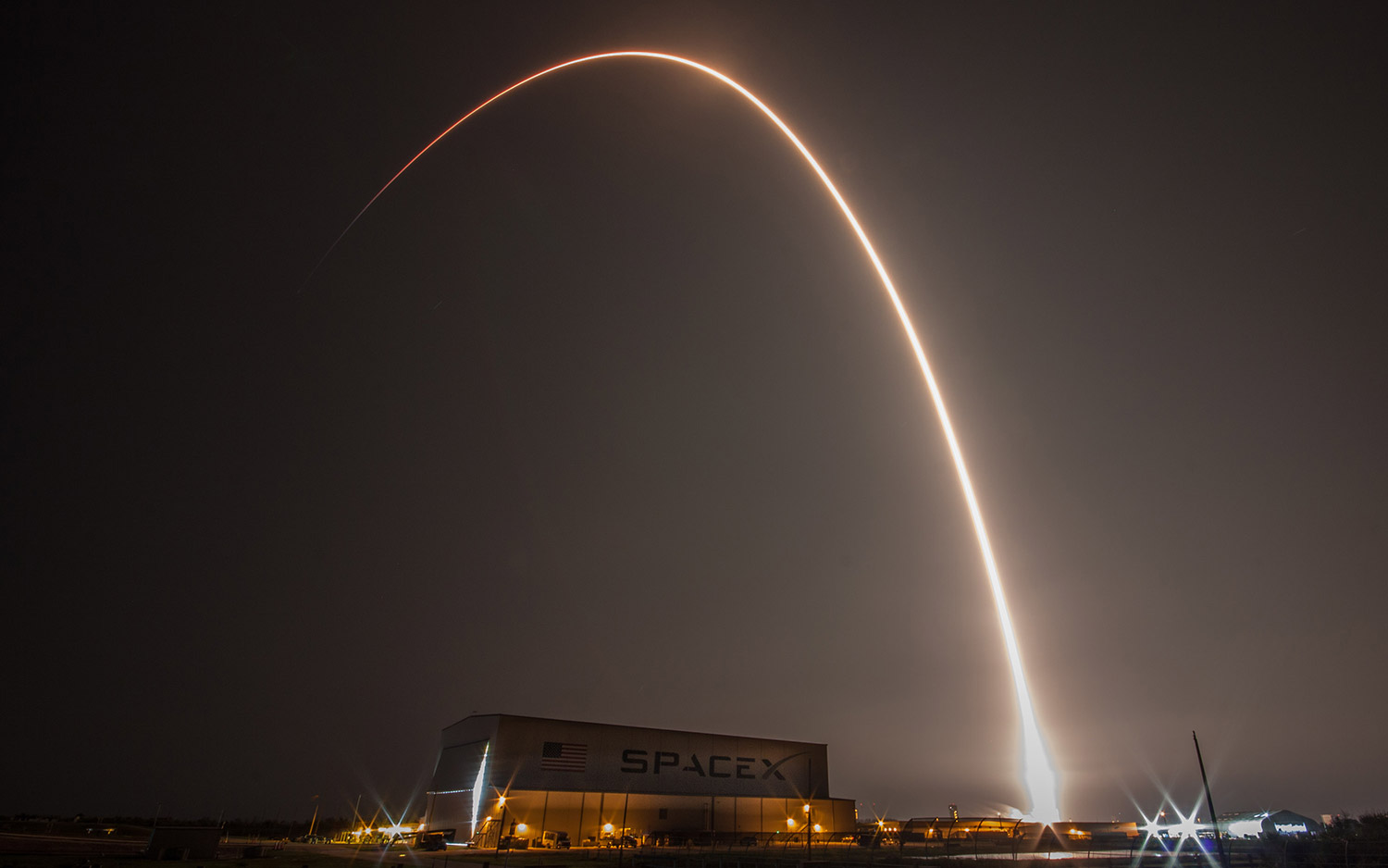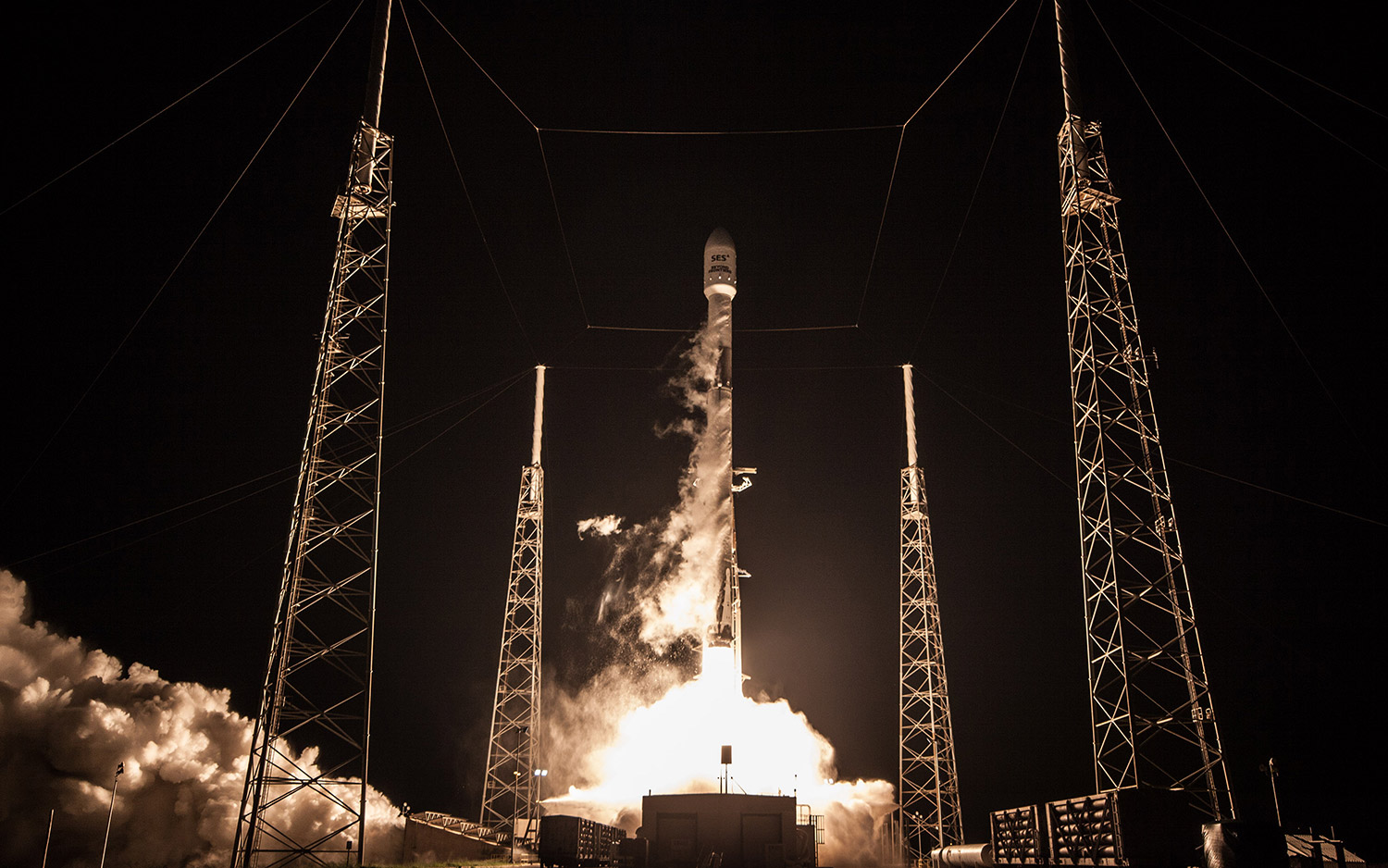Pre-Flown SpaceX Rocket Launches Commercial Communications Satellite
SpaceX has successfully launched a satellite using a pre-flown rocket yet again.
A two-stage Falcon 9 rocket topped with the SES-12 commercial communications satellite lifted off from Florida's Cape Canaveral Air Force Station today (June 4) at 12:45 a.m. EDT (0445 GMT).
This was the second mission for the launcher's first stage, which also helped loft the U.S. Air Force's robotic X-37B space plane last September. The first stage came back to Earth for a pinpoint landing during its first flight, but it did not repeat that feat today; the booster is part of the now-discontinued "Block 4" Falcon 9 build, and SpaceX let the sea claim it. [See the Evolution of SpaceX's Rockets in Pictures]
The company has now re-flown Falcon 9 first stages 13 times and landed the boosters on more than two dozen occasions. These activities are part of SpaceX's effort to develop fully and rapidly reusable rockets and spacecraft — technology that company founder and CEO Elon Musk has said could open the solar system to exploration by drastically reducing the cost of spaceflight.
And Musk and SpaceX are aiming for a lot of reuse, both in the short and long term. For example, the first stage of the recently debuted "Block 5" Falcon 9 is designed to fly 10 times with just inspections between touchdown and liftoff, and 100 times or more with some refurbishment in the mix, Musk has said.
SpaceX has also tried several times to snatch Falcon 9 nose cones out of the sky with a net-equipped boat called Mr. Steven, so that these $6 million pieces of equipment can be reused. Mr. Steven hasn't succeeded to date, but it has come close. Musk has expressed a desire to re-fly Falcon 9 second stages as well, but SpaceX has not tried to recover an upper stage during an orbital launch to date.
The other vehicles SpaceX is flying or developing are resuable, too. For example, the company has launched pre-flown Dragon capsules on robotic cargo missions to the International Space Station, and two of the three Falcon 9 first stages that form the core of SpaceX's Falcon Heavy rocket landed successfully during the huge launcher's debut flight in February.
Breaking space news, the latest updates on rocket launches, skywatching events and more!
And the BFR — the giant rocket-spaceship duo SpaceX is developing to get people to Mars, launch satellites, clean up space junk and carry passengers on superfast trips around Earth — is designed to be fully reusable.
During today's launch, the Falcon 9 successfully delivered SES-12 to geostationary orbit, high above Earth. The satellite will provide data and video services to millions of people throughout the Asia-Pacific region, said representatives of SES, the Luxembourg-based company that will operate the spacecraft.
"SES-12's high throughput capabilities are SES's answer to soaring connectivity demand in the aeronautical and maritime segments in the Asia-Pacific region," SES representatives wrote in a statement. "SES-12 will also be pivotal in enabling governments that want to roll out connectivity programs to bridge the digital divide and in allowing telcos, mobile network operators and internet service providers to deliver more reliable cellular backhaul and broadband services."
SES was the first SpaceX customer ever to entrust a pre-flown Falcon 9 with its payload. The SES-10 satellite lifted off on March 30, 2017, atop a Falcon 9 with a used first stage.
Follow Mike Wall on Twitter @michaeldwall and Google+. Follow us @Spacedotcom, Facebook or Google+. Originally published on Space.com.

Michael Wall is a Senior Space Writer with Space.com and joined the team in 2010. He primarily covers exoplanets, spaceflight and military space, but has been known to dabble in the space art beat. His book about the search for alien life, "Out There," was published on Nov. 13, 2018. Before becoming a science writer, Michael worked as a herpetologist and wildlife biologist. He has a Ph.D. in evolutionary biology from the University of Sydney, Australia, a bachelor's degree from the University of Arizona, and a graduate certificate in science writing from the University of California, Santa Cruz. To find out what his latest project is, you can follow Michael on Twitter.


